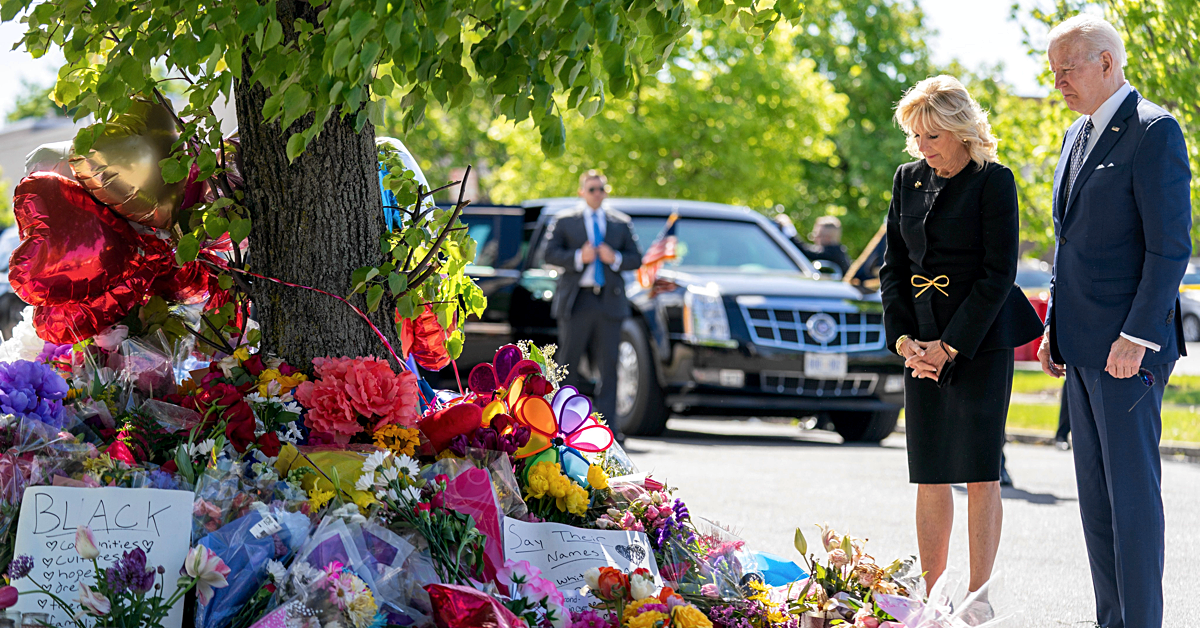
Students across our nation started another week of school after yet another tragic mass shooting motivated by racism and hate. Teachers will face students who have likely heard about how an 18-year-old white male murdered ten Black people in a grocery store located in a predominantly Black neighborhood on Saturday, May 14, 2022. More Black lives lost at the hands of a white gunman fueled by the ideologies of white supremacy culture. Accessibility to breaking news feeds and social media makes avoiding the details of this terror almost impossible.
With nearly 200 mass shootings in less than five months, 2022 continues to expose the devastating recurrence of these planned acts of violence against Black people in the United States. In response to this latest tragedy, Vice President Kamala Harris stated:
“What is clear is that we are seeing an epidemic of hate across our country that has been evidenced by acts of violence and intolerance. We must call it out and condemn it. Racially motivated hate crimes or acts of violent extremism are harms against all of us.”
Despite the undeniable impact these crimes leave on the citizens of our nation, including our children, schools have traditionally sidestepped addressing such hard topics. The reasons for avoidance are both varied and complex. In part, the sensitive and traumatic nature of such crimes gives rise to questions about how to responsively and effectively facilitate discussions with students. In addition, the underpinnings of racism, oppression, and social injustice often lead to adverse reactions from some parents and community members who hold partisan views that further complicate and obstruct transformative instructional practices.
However, by resorting to silence and turning away from the atrocities happening around us, schools actually comply with the current wave of anti-CRT bills that place barriers to the truth for teachers and students. We can’t afford to unwittingly convey the message that we should ignore difficult topics in our society.
There is a common misconception that addressing catastrophes in society means that the teacher is introducing the topic to students. In reality, it is usually the students who insert the topic into the classroom space. “Mrs. S., did you hear about what happened?” “Mr. W., why did ___ happen?” “Ms. M., I'm scared because I saw ___.” Comments and questions like these put teachers in the position to respond in some way.
As instructional experts, teachers often turn to an inquiry-based approach allowing students to express noticings and wonderings. In this way, students' own thoughts and ideas are prioritized, while the teacher facilitates the process of critical thinking. This includes encouragement to ask questions, explore fact-based resources, and engage in discussions that honor the voices of the collective.
Many teacher experts also apply social-emotional learning (SEL) practices to focus on the impact that the publicized acts against humanity may be having on students’ well-being. These practices build equitable learning communities that cultivate healthy and collaborative relationships among students and with teachers. Infusing SEL into instructional practices prepares students to engage as respectful, responsible, and caring members of the classroom as well as their communities.
Feasibly, both teachers and parents want students to leave school with a better understanding of who they are and how to navigate their place in society. Critical consciousness enables students to interrogate tragic moments like what we’ve seen this past weekend—to interrogate the implications of oppressive white supremacist ideologies on the identities and lived experiences of students and their peers. In this way, student engagement in school becomes relevant to the present and to the value of human connections in a global community of multiple perspectives and realities.
When we limit our definition of schools as a place to learn the core subjects (reading, writing, math), get good grades, and pass standardized assessments, we rob students of the opportunity to explore the society they will face upon graduation. School can serve as a space for students to safely question injustices, challenge oppressive ideals, and develop their voices to make meaningful contributions to their world.
Tina Starks is an educational designer for Student Achievement Partners and an education consultant. She is also a 2021-22 Teach Plus California Policy Senior Fellow.
The fight for educational equity has never been just about schools. The real North Star for this work is providing opportunities for each child to thrive into adulthood. This means that our advocacy...
Your donation will support the work we do at brightbeam to shine a light on the voices who challenge decision makers to provide the learning opportunities all children need to thrive.
Ed Post is the flagship website platform of brightbeam, a 501(c3) network of education activists and influencers demanding a better education and a brighter future for every child.
© 2020–2024 brightbeam. All rights reserved.